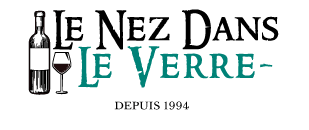An odd whiskey
The Ben Nevis from Fort Williams
This morning two trail options.
Explore the famous Ben Nevis hiking trail, the highest point in Scotland or visit the prestigious Ben Nevis distillery at the bottom of the same mountain.
Given the weather, cold breeze and fine drizzle, we took the (shorter) way of the distillery for a guided tour to understand the making of Highlands whiskey.
The young guide, very friendly with his strong Scottish accent, begins his presentation with the different kinds of cereals, particularity of Ben Nevis, they distil barley, rye but also flax, then we go on with different stages of manufacture.
The malting room, brewing and grinding, then the fermentation room (very hot room) with its large wooden tanks "washbacks" from which arises aromas of yeast and brioche bread.
Direction the room of copper stills, the famous Pot Still, magic of the place the distillation occurs live.
Technical point:
The distillation takes place in 2 stages. The wash (from the fermentation) is routed to a still large still wash. They are equipped with portholes that control the boiling.
The first distillation is completed when the liquid remaining in the bottom of the wash still is not more than 1% volume The residue called pot ale (which can represent more than 2/3 of the initial wash) is used to feed livestock.
Then comes the 2nd stage. Low Wines (obtained after condensation of alcohol vapors) are sent to a smaller still (spirit still) to undergo the 2nd distillation.
The first distillate obtained is redistilled. When the liquid is no longer cloudy, we are in the presence of the future whiskey, the middle cut or heating heart, which averages between 68% and 72% volume The distillation ends when the liquid still in the spirit still title less than 1% volume.
The 3rd distillate is not preserved.
We go out to visit the barrel park used for aging, different barrels and in particular an important stock of the François Frères cooperage in Burgundy which contained white wines.
The slow maturation of the whiskeys takes place in oak barrels that may have contained Spanish finos, Port wine, or "American" bourbon wooden casks.
It should be known that the existence of a natural reserve of pure and abundant water conditions the establishment of distilleries. It is estimated that about eleven liters of water and 1.4 kilograms of barley are used to produce a bottle of whiskey.
At the end of the visit our guide proposes to come and taste the result, their traditional Nevis Dew "Special Reserve" blend 40% volume, surprising by its softness and balance in the final.
Really very feminine.
Ben Nevis Whiskey in our shop.






